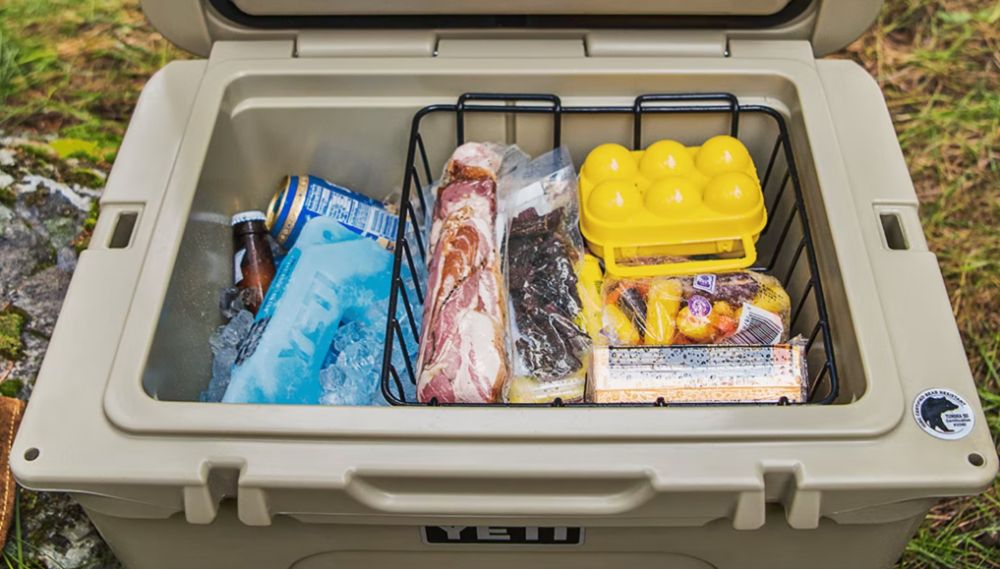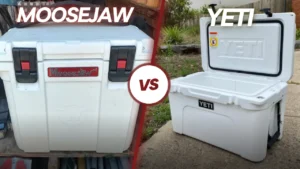If you need to transport meat in a cooler for more than a day or two, you definitely need to keep the meat completely frozen.
It’s easy to keep meat chilled in a cooler with just a little ice, but to keep the meat totally frozen solid is not so simple. Regular ice isn’t actually cold enough to keep meat frozen, so you’re going to need a little planning to keep the meat in the cooler frozen.
The best way to keep meat frozen in a cooler is to pre-freeze the meat and place it in a pre-chilled high-end cooler with thick insulation. Place the meat at the bottom of the cooler with ice packs on top followed by an insulating layer. To keep meat frozen for longer trips consider using dry ice.
To see why each one of these tips is important and how many you can combine to keep meat frozen longer in a cooler, keep reading.
With the right know-how and planning, you can keep meat frozen completely solid in a cooler for many days.
1. Choose a Great Cooler
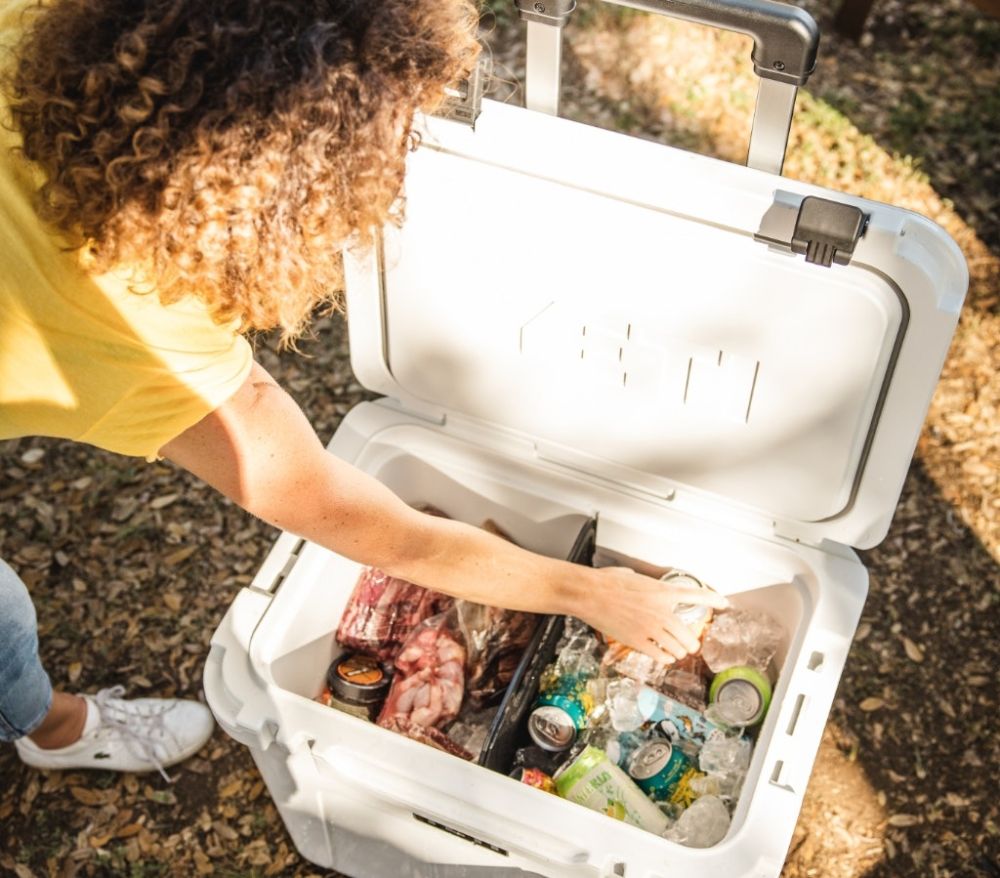
If you want to keep your meat frozen for days then absolutely do NOT skimp on a cooler. A cheap cooler can keep meat cold for 1-3 days but it won't keep it frozen. For that you need a high-end cooler.
A high-end cooler like the Yeti Tundra 45 will keep meat frozen for 3+ days and keep meat cold for close to a week if you follow the tips in this article. A simple plastic cooler will only last two days at best.
Invest in a cooler with thick insulation and have a look at the list of the best coolers for ice retention as these cooler keep things frozen longer than any other coolers on the market.
It will make a huge difference in the time you can keep meat frozen and you’ll never look back. The better the cooler the longer it will keep food completely frozen.
2. Pre-Chill the Cooler
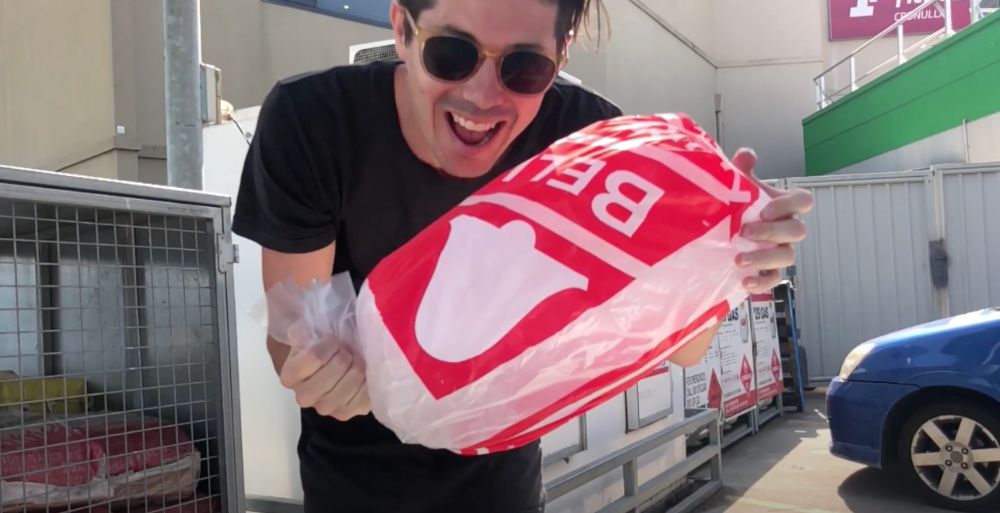
High-end coolers like Yeti have a thick layer of insulation between the hard plastic walls, and while this insulation helps to keep heat out it can actually absorb a lot of heat itself if the cooler is kept in a warm area (like the car or a garage).
For this reason, it’s important to pre-chill the insulation in the cooler. If you don't then ice will melt more quickly in your cooler and you meat will warm up quickly too and fail to stay frozen.
Pre-chilling the cooler is a simple process. You can use regular ice – just fill the cooler up with a sacrificial bag of ice the night before you want to use it. You can also use ice packs or homemade block ice to pre-chill your cooler.
Dispose of the sacrificial ice before you pack the cooler for your trip, and you will be starting with ice-cold insulation, adding hours or days of cold time to the cooler and keeping your meat frozen for longer.
3. Pre-Freeze the Meat
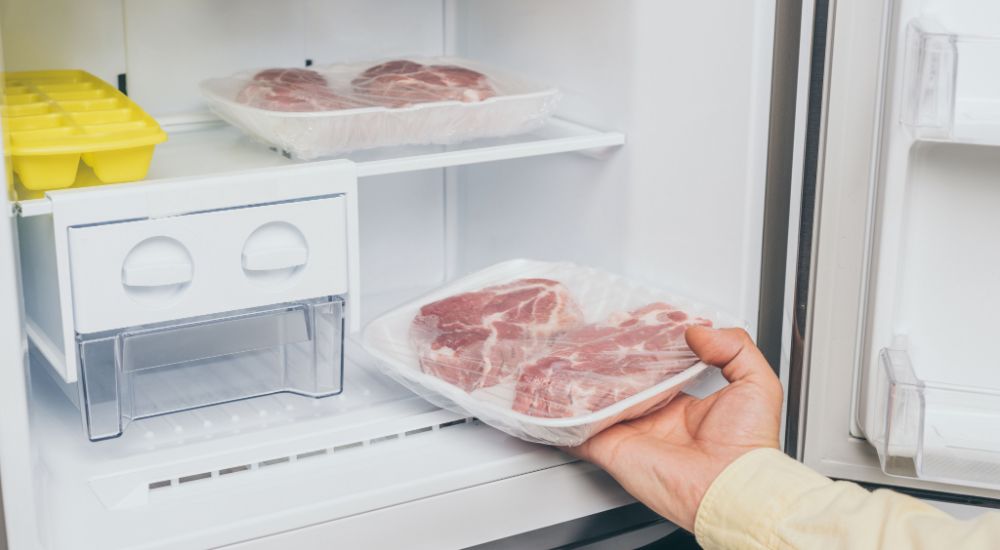
Pre-freezing the meat you put in the cooler is super important for at least three reasons:
- Coolers are not cold enough to actually take the meat from cold to frozen
- Frozen meat will act like additional ice, keeping the entire cooler cold longer
- Placing thawed meat in a super-cold cooler with dry ice or ice packs will cause freezer burn, ruining the meat
Make sure to plan ahead if you plan on packing any meat in a cooler long-term. Freeze it solid in your freezer at home before you put it in the cooler.
You'll want to turn your freezer down to it's lowest temperature and place the meat towards the back of the cooler so it can start as cold as physically possible.
See a comparison of raw vs. frozen meat lifespan in a cooler.
4. Seal the Meat Perfectly
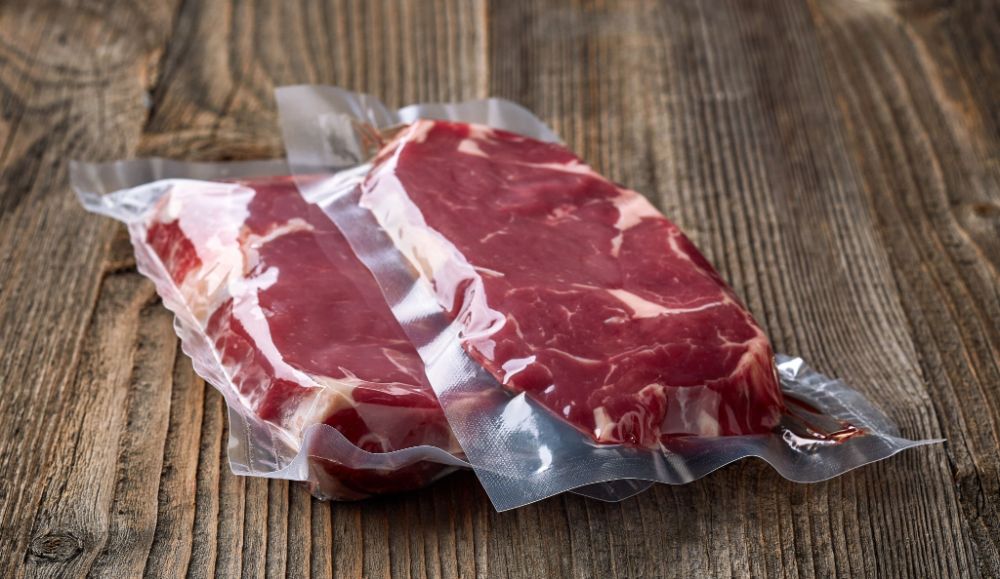
There are a couple of risks to carrying meat in a cooler: freezer burn is one, but the meat can also become wet and contaminated by melting ice or condensation.
This will not only ruin your meat but it'll also spread blood and potentially bacteria through your entire cooler ruining other food items and causing a big mess.
Make sure to pack the meat in a sealed container, whether that be plastic zipper bags or reusable containers. Avoid putting meat into a cooler in supermarket packaging (it tends to leak) or butcher paper.
Use something watertight to seal the meat perfectly and it will be safe from any water that may be in the cooler.
5. Use Dry Ice
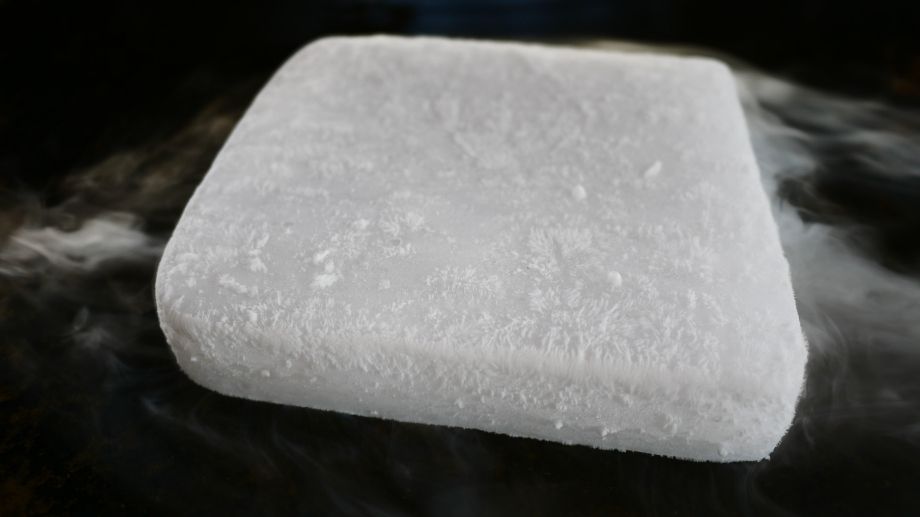
Dry ice is much colder (-109ºF [-78ºC]) than regular ice. This means it can keep the meat frozen for as long as the dry ice lasts, which can be more than 5 days in a high-end cooler.
Dry ice can be tricky to buy, but if you can get your hands on it, it’s powerful stuff. That’s why meal shipping companies use it to keep meat cold in the post.
Beware of freezer burn – separate meat from dry ice with a layer of plastic or foam. Learn how about exactly how to pack dry ice in your cooler so meat stays frozen and fresh but doesn't get ruined.
6. Use Cold Packs
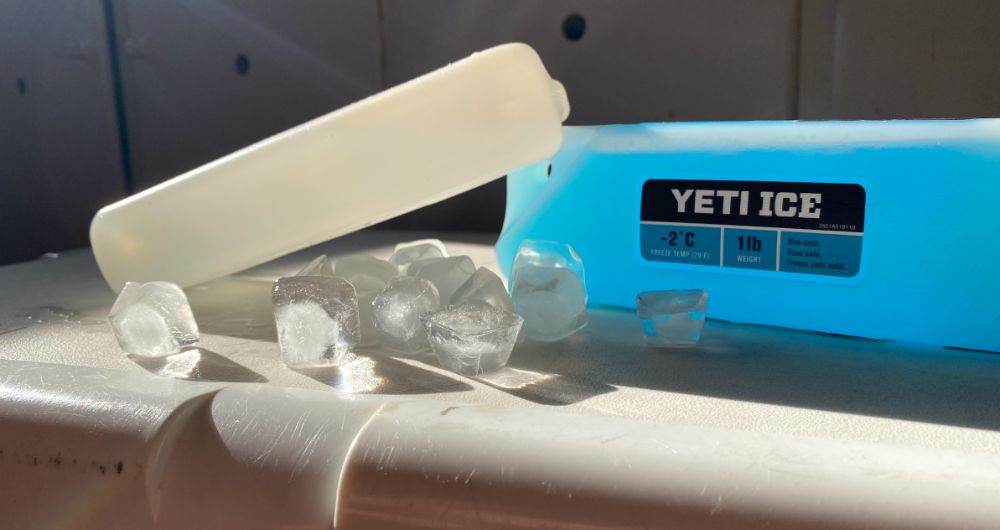
I actually prefer using cold packs for coolers over dry ice. They are reusable, which is great for saving money and it’s better for the environment. But the main this is they are easier to access and I can freeze them in my freezer at home.
Ice packs are better than regular ice if you are trying to keep meat frozen. This is because they are designed to stay colder than regular ice (read about the science behind why this happens here).
You don't need to understand the science, just know that regular ice keeps meat at around 32ºF/0ºC which does NOT keep meat frozen. Ice packs keep meat between 20 to 28ºF/-7 to -2ºC which will keep meat frozen.
You can find them in different sizes to fit your cooler and I've got a full list of the best ice packs you can buy for your cooler or you can make homemade ice packs for your cooler which are just as good but are cheaper. Buy a few sets of these and they will last you for years.
I recommend the Engel 20 ice pack as it's designed to stay at 20ºF (-6.7ºC) and this will keep your meat frozen and fresh for days at a time in a good cooler.
This ice pack is designed to stay much colder than regular ice.
At 20ºF (-6.7ºC) it can keep food and ice cream frozen in your cooler for longer.
7. Pack Frozen Meat at the Bottom of the Cooler
Take advantage of this basic principle: hot air rises, and cool air sinks. Plus notice how every time you open your cooler cold air comes into the top, warming up items near the top more than items at the bottom.
The bottom of the cooler will naturally be the coldest area. Start with your frozen meats on the bottom and pack your ice/ice packs around the sides and on top of the meat.
The cold air will stay in the bottom with the meat, the place where it really counts.
For best results put a layer of ice packs below your meat, followed by your meat, then a layer of ice packs directly on top of it and then use an insulating layer on top of that.
8. Use an Insulating Layer
After you’ve loaded the cooler with your meat on the bottom and ice packs or dry ice on top of the meat, you can add an extra insulating layer to seal the frozen materials in.
This will keep any “dead air” in the cooler from warming up your meat and ice, and also protect the frozen meat if you need to open the cooler or store unfrozen items at the top of it.
This layer doesn’t have to be fancy. A thick piece of rubberized foam will do the trick well, but you can also use a car windshield reflector, a piece of plastic or even a layer of cardboard (though this may get wet).
Whatever you use, it should be the right size to press against all of the edges of the cooler and create a pretty tight barrier.
The best option is to trim a piece of foam so it’s a few inches longer and wider than your cooler – then, tuck the excess foam down the inside of the cooler and around the frozen ice and meat.
9. Keep the Cooler Closed
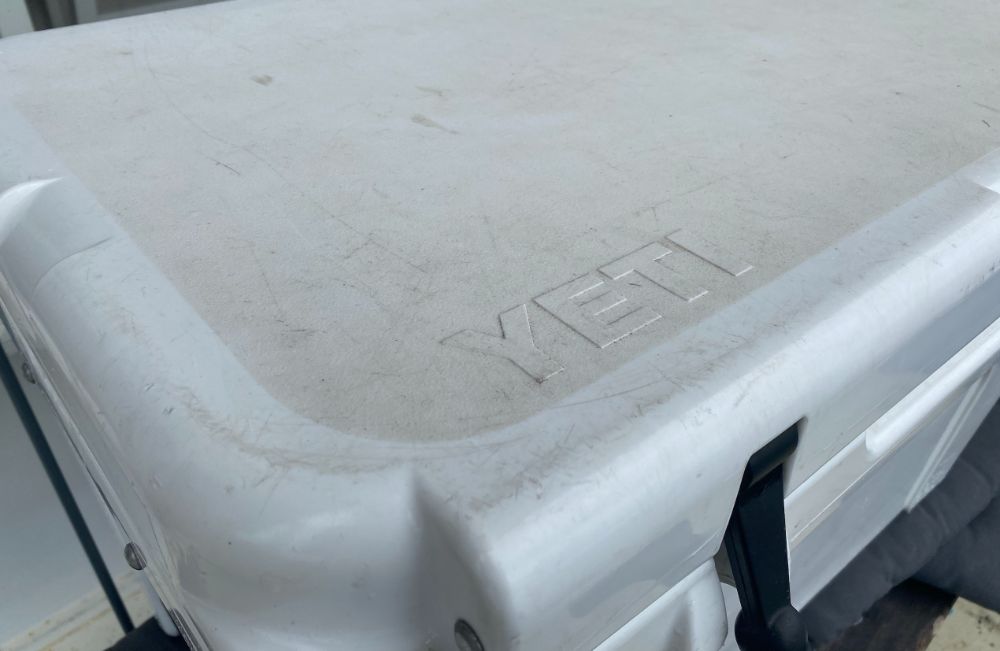
Whatever other methods you use, keeping the cooler closed as much as possible will help keep meat frozen longer.
Every time you open a cooler, warm air comes in and shortens the cold-time of the contents. The less you open your cooler the colder everything inside will stay.
If you're really worried about temperature then a cooler thermometer can be a good way to monitor the internal temperature of the cooler without having to open it.
10. Use A Separate Cooler For Frozen Meats
If you need to keep drinks or food cold, use a separate cooler from your frozen meat cooler so that you don’t have to keep opening the one with frozen food in it.
That way you can pack frozen meats with ice packs and ice and fill the cooler to the brim. Coolers work best when they are completely full so this will keep your meat frozen as long as possible.
Then have a separate cooler for items that need to stay cold but not frozen and items you regularly access.
Summary
Keeping meat frozen solid is the only safe way to carry it in a cooler for more than a couple of days. Maintaining a cooler that cold requires some planning, so remember all of these tips:
- Invest in a great cooler and pre-chill it
- Pre-freeze all meats and seal them in plastic to keep them clean and prevent freezer burn
- Use dry ice or cold packs, not regular ice
- Pack meat at the bottom of the cooler with a foam layer on top
- Keep the lid closed as much as possible
- Use a separate cooler for drinks if possible
With these tips in mind, you should be good to keep meat frozen in a cooler for many days!

